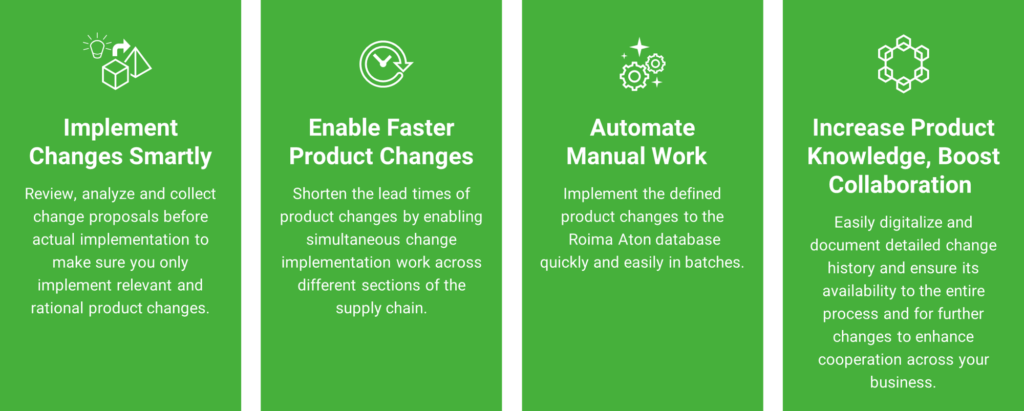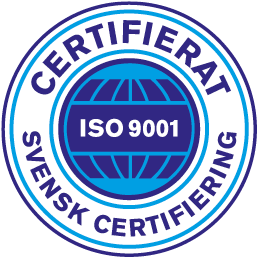4 Ways How Efficient Product Change Management Can Boost Your Supply Chain
Today’s consumers are continuously demanding new products or enhanced versions of old products with new functions and features. To add to the challenges, over the last couple of years, the poor availability of certain components and raw materials has forced many manufacturing companies to find new ways to produce even their most established of products. Success in this setting highly depends on the resiliency of the supply chain to adapt and respond to the ever-changing demand and new challenges quickly and efficiently.
From product management point of view, these challenges and trends are (more or less) a question of configuration and version management. To manage product configurations and versions efficiently and effectively, you need defined and streamlined product change management processes, as well as the right tools to support them.
An ideal change management tool enables effortless and organized documentation of changes. It also enhances transparency and collaboration across engineering, purchasing, and manufacturing processes. This helps to shorten product change lead times, allowing you to introduce better products to the market faster. All this helps to boost the efficiency and competitiveness of your supply chain.
4 Ways to Boost Your Supply Chain
1. Implement changes smartly
With the right change management tool, you can collect, review, and analyze change proposals before their actual implementation to make sure you only implement relevant and well-justified product changes. In practice, this means collecting, analyzing, and implementing changes in the supply chain in a controlled way, engaging the entire supply chain in the change processes to the extent that is necessary. This motivates all the parties involved in the change and hence also reduces resistance to change.
2. Enable faster product changes
Time is the key, and the ability to change fast is crucial for success. Efficient change management processes and tools allow the different parts of the supply chain to work simultaneously and in parallel, despite the changes. This empowers you to execute the necessary product changes faster, boosting the efficiency of your supply chain.
3. Automate manual work
By raising the level of digitalization and automation of your change management process and the related processes and tasks, you can decrease the amount of manual work. Automation will speed up the processes and reduce the number of human errors and mistakes, as well as free up workforce to more relevant and value-adding tasks – all contributing to efficiency in the supply chain.
4. Increase product knowledge and boost collaboration
By digitalizing your change management processes and by applying the change processes across all the relevant parties or stakeholders, operations, and processes of your company, you can also increase product knowledge and the quality of information. With the right tools, you can easily digitalize and document detailed change history and ensure its availability to the entire process and for further changes to enhance cooperation across your business.
These four steps together can improve the quality of your products, operations, and processes, enhance the traceability of changes, and make the reasoning behind each change clear and transparent. In short, you can boost quality as well as your business performance and competitiveness and build a more resilient supply chain.
All four targets can be achieved with the Roima Aton 7.1 product management solution and its new change management features, such as the new Impact Analysis tool.
Case Story: Nedap streamlined their change management process for faster changes and better documentation..
One example of a company whose product engineering relies heavily on efficient change management is Nedap, a multinational Dutch technology company who has been using the Roima Aton product management solution for years. At Nedap, change management is seen as a systematic approach to all changes, crucial for the engineers to work efficiently.
Nedap understands that time is the key to success and the total lead time of the change process should be as short as possible. They know that the ability to change faster calls for the ability to document better and, vice versa, better documentation requires the ability to change faster. Faster changes also reduce complexity when there is a need to process multiple changes of different sizes simultaneously.
Nedap’s primary goal was to streamline their change process based on the CM2 change process concept, a global enterprise standard for enterprise change and configuration management. With Roima’s support and the Roima Aton solution, Nedap established a clear and unambiguous change process where all actions, operation and tasks related to change process are centrally registered through Aton. Not a single product change is done without an approved set of documentation, and with Aton Impact Analysis tool, it is possible to quickly identify all the objects related to the changes as well as to plan the consequences of changes. Thanks to the efficient change management process and tools, Nedap was able to achieve faster changes and better documentation and thus boost their competitiveness.












